Reflections on Mindfulness and Meditation
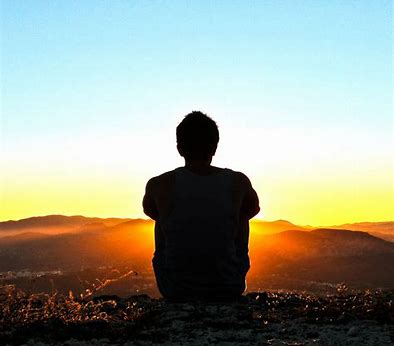
“Trust that you will receive help from beyond. It is very real!”
~Marj Steiner
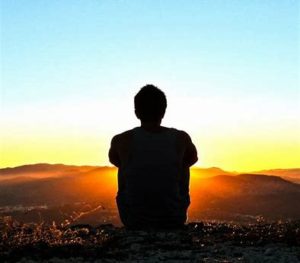 One of the questions I have held for a number of years is deciphering the differences between the practices of mindfulness and meditation? As I have journeyed over these years since my daughter’s death, I have been drawn to meditation and found a fullness of experience that sooths my heart, increases the wisdom I carry into my everyday life, and lets me know that I am never alone. With meditation I have learned life is “everlife.” I find mindfulness practices to be very helpful with practical everyday living.
One of the questions I have held for a number of years is deciphering the differences between the practices of mindfulness and meditation? As I have journeyed over these years since my daughter’s death, I have been drawn to meditation and found a fullness of experience that sooths my heart, increases the wisdom I carry into my everyday life, and lets me know that I am never alone. With meditation I have learned life is “everlife.” I find mindfulness practices to be very helpful with practical everyday living.
I feel very grounded in meditation now, but I am a beginning learner when it comes to mindfulness practices. Or am I? Perhaps I just do not call them Mindfulness. These two terms and their practices are incredibly intertwined. This blog cannot possibly contain the wealth of details of these two practices. So, I will suffice it to say that I have found it very useful to compare and contrast mindfulness and meditation.
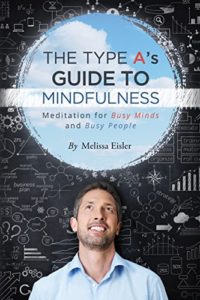 I came across an article by Melissa Eisler, author of The Type A’s Guide to Mindfulness: Meditation for Busy Minds and Busy People,that inspired me to dig deeper into understanding the differences. She works for the Chopra Center for Wellbeing and teaches various forms of meditation and yoga. She also volunteers in the oncology ward at Rady’s Children’s Hospital. Melissa grew up with the mantra ‘work, work, work, achieve, achieve, achieve,” and learned to live in fear of failure. She developed huge anxiety issues. Her work with mindfulness freed her ‘monkey mind” and allowed her to be herself. Her book is full of rich information on mindfulness and meditation and the wisdom she has gained. It is a very practical book.
I came across an article by Melissa Eisler, author of The Type A’s Guide to Mindfulness: Meditation for Busy Minds and Busy People,that inspired me to dig deeper into understanding the differences. She works for the Chopra Center for Wellbeing and teaches various forms of meditation and yoga. She also volunteers in the oncology ward at Rady’s Children’s Hospital. Melissa grew up with the mantra ‘work, work, work, achieve, achieve, achieve,” and learned to live in fear of failure. She developed huge anxiety issues. Her work with mindfulness freed her ‘monkey mind” and allowed her to be herself. Her book is full of rich information on mindfulness and meditation and the wisdom she has gained. It is a very practical book.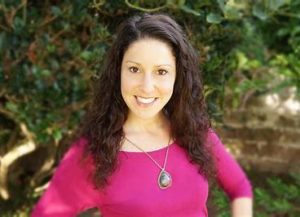
Mindfulness
I will begin with a definition that I hope will help the readers as it helped myself. Mindful.org defines mindfulness: “Mindful is the basic human ability to be fully present, aware of where we are and what we’re doing, and not overly reactive or overwhelmed by what’s going on around us.” Melissa Eisler writes, “When you are being actively mindful, you are noticing and paying attention to your thoughts, feelings, behaviors, and movements, and also to the affects you have on those around you.” She shares a recent study at Harvard that found people spend 46.9% of their time thinking about something other than what they are doing. This sounds like me…I know that I am a multiple tasker and it gets me into trouble sometimes. Eisler states that “the mind spends its time focused on the past (in regret mode), the future (in worry mode), and trying out should have’s and what if’s. The researchers stated that a “wandering mind is an unhappy mind.”
Editor-in-chief Barry Boyce in an article written in the August 2018 issue of Mindful Magazine, wrote about the roots of Mindfulness. It is believed to be an inherent ability, enhanced by various practices, that is focused on the wellbeing of communities – not just a self-help activity. It builds our kindness and compassion. The roots of many of the practices have come from the Buddhist, Hindu, and Chinese traditions. Current leaders such as Thich Nhat Hanh, the Dalai Lama, and Pema Chodron have been involved in bringing this philosophy to life in the west. The practices, including certain forms of meditation, are not dependent on any religion. Mindfulness has gained followers and people using the practices in many walks of life including schools, libraries, hospitals, juvenile detention programs, and many other groups and individuals. Research has found these practices to be very beneficial, even lifesaving.
Life can be very challenging. When practicing mindfulness, you are tuning out the external world and using focused attention, via your five senses, while engaged in everyday activities. You are practicing observing your behaviors and attitudes and accepting all that arises without judgement. Meditation is an activity that is used to accomplish such a focus, but mindful meditation does not always mean you are sitting. You may be walking, exercising, doing yoga, sitting still, doing dishes, cooking, sitting at your work desk or standing line – bringing focus to the one thing you are doing. You are taking a few minutes to “listen and feel.”
“If you correct your mind, the rest of your life will fall into place.”
~Lau Tzu
Meditation
Traditional or classical meditation usually refers to a time of focused stillness, often done in a seated position, providing a different kind of rest, starting with deep breathing. It is a time to shift our consciousness from the material and to go within where silence is found. We do this when we dream and within meditation. With practice we can be somewhere between full waking and fully asleep. It takes practice and non-judgement. Yes, I know, our monkey mind can conjure up many thoughts. When you become aware that your mind and heart are not working together and the unwanted thoughts flow, just say “thought”, let go of the thoughts without judgement, and return to the silence.
I think it would be fair to say that the roots of the practice of meditation has come from various religions, including Christianity. One of the dictionaries defines meditation as a written or spoken discourse expressing considered thoughts on a subject; quite inadequate. Like mindfulness, what is experienced in meditation also involves an inherent ability, definitely enhanced by practice, but for me, is focused on making the connection between the human part of ourselves and the Divine part. It is making the connection with the oneness of all that is. We are both human and spirit or soul – we came here to experience being human. We remain connected to the Source we came from. It is universal to seek insights into our lives, what makes our life work and what causes pain and suffering. Even for eons, humans have been seeking insights into how our whole existence works. Everyday life, career challenges and joys, people problems, all can get in our way as we access new insights. So the focus of meditation is on going within. There are many forms of meditation; Many people have a bag-full of issues with the word God, with the traditions that they were taught as a child. It does not matter what you call it, but recognizing that we have a universal Source, learning to connect our mind and heart to that Source can bring powerful insights and guidance.
 In Conversations with God: Book 1, the author Neale Donald Walsh writes on p., “Begin by being still. Quiet the outer world, so that the inner world might bring you sight. This in-sight is what you seek, yet you cannot have it while you are so deeply concerned with your outer reality…come from within as you deal with the outside world…Remember, ‘If I do not go within, I go without.’” I am reminded that
In Conversations with God: Book 1, the author Neale Donald Walsh writes on p., “Begin by being still. Quiet the outer world, so that the inner world might bring you sight. This in-sight is what you seek, yet you cannot have it while you are so deeply concerned with your outer reality…come from within as you deal with the outside world…Remember, ‘If I do not go within, I go without.’” I am reminded that 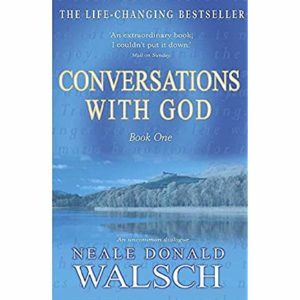 often we choose to ignore the very thing that will help us the most when we are in trouble, when we are experiencing the most challenging times of our lives. That is when we need meditation the most. Walsh states that hard times are “the time to go to your God space more than ever. First it will bring you great peace of mind – and from a peaceful mind do great ideas flow – ideas which could be solutions to the biggest problems you imagine yourself to have. Second, when I go within, I find resources that come from beyond me.”
often we choose to ignore the very thing that will help us the most when we are in trouble, when we are experiencing the most challenging times of our lives. That is when we need meditation the most. Walsh states that hard times are “the time to go to your God space more than ever. First it will bring you great peace of mind – and from a peaceful mind do great ideas flow – ideas which could be solutions to the biggest problems you imagine yourself to have. Second, when I go within, I find resources that come from beyond me.”
Buddha was asked, “What have you gained from meditation?” He replied “Nothing!”
“However, “ Buddha said, “Let me tell you what I lost: anger, anxiety, depression, insecurity, fear of old age and death.”
Found on page 79 of The Type A’s Guide to Mindfulness
Mindful practices are helpful with the everyday issues. Wayne Dyer taught me to use the phrase, “I choose Peace.” It is hard at first to remember to say it before the anger, anxiety, or fear spills out. With mindful practice, using this phrase can bring peace to the situation.
Meditation is an activity where you’re consciously fostering a sense of deep awareness. In my experience it is deepening the connection between yourself and the Divine, with the Source. It helps you see the bigger picture in life. Also I want to say meditation is a form of LISTENING.
I don’t have time… often stops us from meditating. This can be an issue for me. But there is a saying; “If you do not go within, you go without.” There is a double meaning here. Going without the guidance and source of wisdom that is beyond this realm limits us to the human part of our selves. But it also makes us very susceptible to the cultural influences that are negative and life-draining.
Life is vibration of energy – there are low vibrations, medium vibrations, high vibrations and everything in between. We don’t like to feel the lower vibrations of being human. Meditating, being in nature, breathing in fresh air helps us breathe Spirit and Love into our lives. Don’t allow ego to run the show. Let Spirit’s Light shine through the clouds. Love is the highest vibration.
“…Contemplative practice is to attempt to sit open-handed
and listen to the ‘wee small voice’
that sometimes whispers ideas and ways forward.”
~by Simone Campbell
famously known as the ‘nun on the bus’
 The Light Gap
The Light Gap
Lovely, Marj! Valuable reflections. Thank you. Ideally we use both meditation and mindfulness in our daily lives and they strengthen each other. I find that when I am experiencing weakness in one, the other really shores it up.